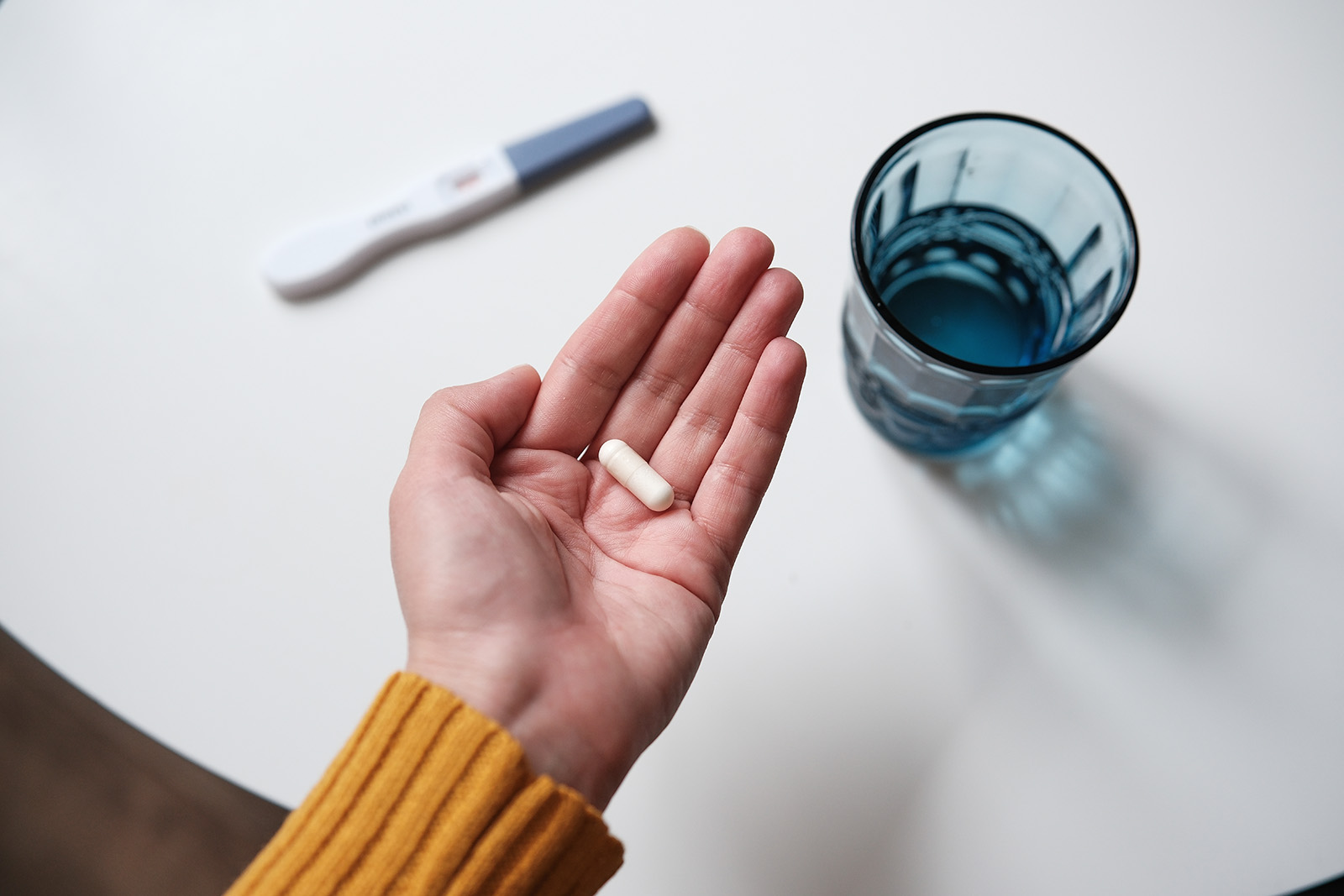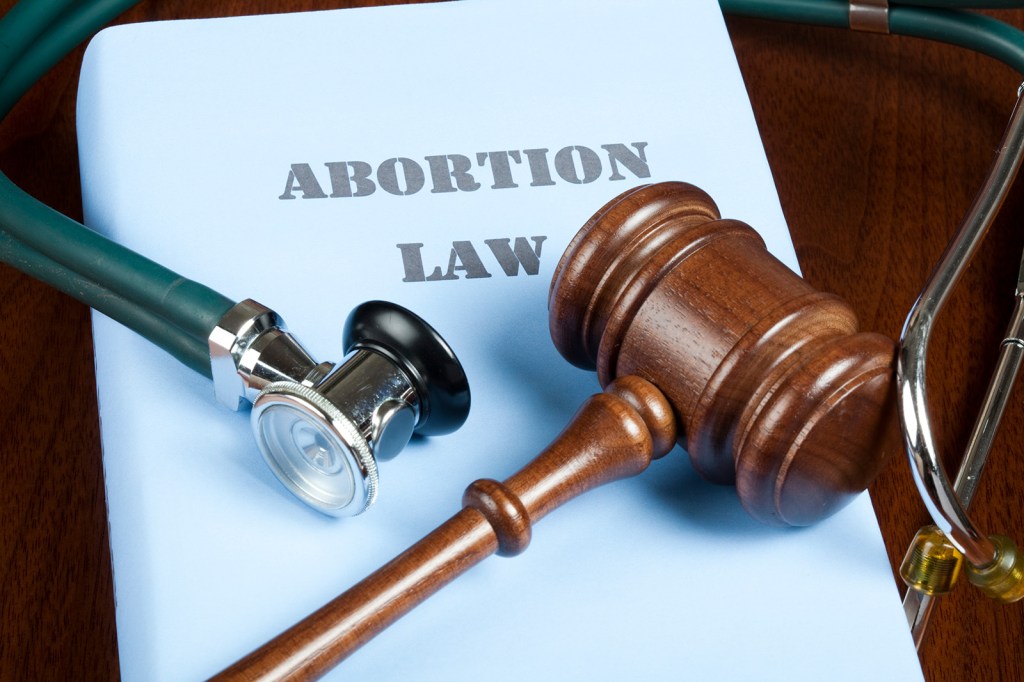
The independent source for health policy research, polling, and news.
VOLUME 9
How Abortion Misinformation Gives Rise to Restrictive Abortion Laws
This is Irving Washington and Hagere Yilma. We direct KFF’s Health Misinformation and Trust Initiative and on behalf of all of our colleagues across KFF who work on misinformation and trust we are pleased to bring you this edition of our bi-weekly Monitor.
Summary
This volume explores false claims suggesting abortions occur after birth, misleading narratives around the safety of abortion pills, like mifepristone, and other tactics used to distort the safety of abortions. It also explores research on the acceptance of health misinformation and the proliferation of AI-generated fake news sites.
Emerging Narratives
Trump claims abortion is infanticide at election events

False claims about abortions later in pregnancy are often spread to distort perceptions of when and how often pregnant people have abortions. Some have exaggerated these claims even further, falsely stating that individuals seek abortions after birth. During the presidential debate on September 10, former President Trump falsely claimed that Democrats support “abortion after birth,” equating it to execution. Despite the fact that killing a child after birth is infanticide and illegal in all states, Trump’s statement sparked outrage among anti-abortion advocates who accepted his words as fact.
Some posts after the debate debunked claims comparing abortion access to infanticide, but other public figures, such as former Arkansas Governor Mike Huckabee, repeated similar misleading statements. Huckabee’s Facebook post expressed dismay at the fact-checking during the debate, saying, “I assume [Harris] knows that most Americans find late-term abortion to be infanticide.” An X user received approximately 2 million views and 21,000 shares on their post in support of Trump’s false claim, stating “This is the level of depravity, incompetence, and casual evil that we are dealing with in government.” Most commenters agreed with the post, with many calling Trump a “truther.”
False claims equating abortion to infanticide and misleading claims about the prevalence of abortions later in pregnancy have circulated intermittently for decades, with Trump repeating this narrative several times this year. Each time he made the claim, there was a spike in mentions of terms like “late-term,” “nine month,” and “post-birth” abortions—non-medical terms that refer to abortions later in pregnancy or describe infanticide. On the evening of the debate, there were approximately 105,000 mentions of these terms on social media and in news articles. The frequent use of “late-term abortion” in social media posts suggests that the public has accepted it as a medical term, despite it having no medical meaning.
Politicians and anti-abortion advocates often claim that a significant number of abortions occur late in pregnancy, suggesting that people carry pregnancies for eight or nine months and then suddenly decide to seek an abortion. In reality, abortions later in pregnancy typically occur because individuals receive new information about their pregnancies, such as the discovery of serious fetal or maternal health issues, or because they were unable to access abortion services sooner. A KFF Issue Brief explains how rare abortions later in pregnancy actually are.
Polling Insights:
Abortions at or after 21 weeks are uncommon and represent 1% of all abortions in the U.S. However, KFF’s March Health Tracking Poll found that there is widespread misunderstanding among the public about when most abortions occur. Most adults (67%), including similar shares of women and men, are unaware that less than five percent of abortions occur more than 20 weeks into a pregnancy, while one-third of adults (32%) correctly say that fewer than five percent of abortions occur before this point (Figure 1).
Misleading Claims Push the False Narrative That Abortion Pills Harm Health

Last month, ProPublica reported that the 2022 deaths of Amber Thurman and Candi Miller in Georgia were preventable and linked to the state’s six-week abortion ban. The report explains that both women developed rare complications after taking abortion pills and ultimately died because they were unable to access timely medical care under Georgia’s abortion ban. Medical experts affirm that such complications are rare and that the primary risk comes from delayed medical intervention, but these cases have been misrepresented to stoke fear and push for further restrictions on access to abortion pills.
Online conversations following the reports reflect widespread misunderstanding about abortion pill safety. Some commenters on an X post from Vice President Kamala Harris’s presidential campaign, which included a clip of her mentioning a death in Georgia, claimed it was due to a “botched abortion” and argued that abortion pills are unsafe. Another comment read, “If she just wouldn’t have taken that poison abortion pill with the intention of ending the life of her own twins, she would be alive today.”
False claims that abortion pills are unsafe have existed in the U.S. since the FDA approved medication abortion in 2000. These claims picked up after Roe v. Wade was overturned in 2022, as abortion pills became a more common method for ending a pregnancy. The false claims that abortion pills are unsafe undermine trust and contribute to laws restricting access. This sort of misinformation was central to a Supreme Court case reviewing a challenge to the FDA’s approval of mifepristone. The Court decided to uphold the FDA’s approval, but only because the defendants lacked standing to bring this challenge. A KFF Policy Watch explains how the Court’s decision leaves room for states to impose restrictions, like in Louisiana, where a law reclassifying abortion pills as a controlled substance recently went into effect.
Recent Developments
Misinformation Campaigns Undermine Abortion Rights Ballot Measures in Upcoming Elections

Misinformation about the safety of abortions threatens ballot measures in the upcoming elections, as voters in 10 states will have the opportunity to vote on protecting or expanding abortion rights. In Florida, a proposed constitutional amendment aims to protect abortion rights for state residents, but some worry that the government is using false information to dissuade voters from supporting this amendment. A website produced by the Florida Agency for Health Care Administration (AHCA) claims the amendment “threatens women’s safety” and will “expose women and children to health risks.” A lawsuit accused the AHCA of spreading false information on a government-sponsored website. However, a Leon County circuit judge denied the temporary injunction to block the AHCA from sharing the information, ruling that it is a political issue for voters to decide.
Misleading Claims Suggest That Exceptions to Abortion Bans Provide Sufficient Protection

A federal judge temporarily blocked the DeSantis administration from threatening broadcasters with criminal charges for airing a television ad supporting a proposed state amendment to protect abortion access. The ad features a woman who had a life-saving abortion but said she would be unable to do so under Florida’s current abortion ban. The Florida Department of Health claimed the ad contained false information, stating that women in life-threatening situations can still obtain abortions. Broadcasters defended the ad’s accuracy, citing the law’s vague language, which permits abortions after six weeks only when there is an “immediate” threat—a condition that did not apply in the woman’s case. The judge ultimately decided that the actions of the Florida DOH threatened First Amendment Rights, but the accuracy of the ad’s content was not central to the decision.
Anti-abortion advocates made similar claims following ProPublica’s reports that attributed two deaths to Georgia’s abortion ban, arguing that misinformation about exceptions to bans, rather than the bans themselves, causes harm. The tactic of misrepresenting harm caused by restricting abortion access is not new, but it remains misleading. A KFF Issue Brief explains that while many states with restrictive abortion laws have exceptions, the vague and inconsistent language of these laws creates confusion, leaving patients and physicians uncertain about when an abortion is legally permitted.
Polling Insights:
The 2024 KFF Women’s Health Survey found that 45% of women of reproductive age were aware of the status of abortion policy in their state, while 23% incorrectly described the status of abortion in their state, and 1 in 3 were unsure (Figure 2). Even in states where abortion is generally available, majorities were not aware of the policies around abortion.
Research Insights
Belief in Alternative Medicine Is Linked to Greater Acceptance of Health Misinformation

A study in the Journal of Experimental Psychology examined the relationship between beliefs in complementary and alternative medicine (CAM), which includes non-traditional treatments like herbal remedies, and susceptibility to health-related misinformation. The researchers found that people who believe in CAM are more likely to accept false health information and resist changing their views, often ignoring standard credibility cues like scientific qualifications. There was also a strong link between vaccine hesitancy and initial belief in misinformation, demonstrating that personal beliefs shape how individuals process information. Therefore, a tailored approach to pointing out the lack of expertise of unreliable health sources may help reduce belief in misinformation.
Source: Swire-Thompson, B., Kilgallen, K., Dobbs, M., Bodenger, J., Wihbey, J., & Johnson, S. (2024). Discrediting health disinformation sources: Advantages of highlighting low expertise. Journal of Experimental Psychology: General, 153(9), 2299.
AI and Emerging Technology
Generative AI Fuels Growth of Fake Local News Sites

AI technology, particularly generative AI, has contributed to the proliferation of “pink slime” sites, which are deceptive websites appearing as legitimate local news sources. These sites use AI to rapidly generate large volumes of content, often blending factual information with partisan or misleading narratives for political or financial gain. As of June, these pink slime sites began to outnumber real local news sites, undermining the integrity of information. Recently, Metric Media, a major operator of these sites, faced criticism for its role in spreading misleading content ahead of the November elections. Critics argue that Metric Media’s network of over 1,200 websites pushes a political agenda instead of providing unbiased news. Last year, the company was also criticized for sharing fake print local news which contained biased articles supporting an Ohio ballot initiative. The initiative sought to make it more challenging to amend the state’s constitution, thereby restricting residents’ ability to codify abortion rights.
This edition was created in close collaboration with KFF’s Women’s Health Policy project. For more information, visit https://www.kff.org/womens-health-policy/.
Support for the Health Information and Trust initiative is provided by the Robert Wood Johnson Foundation (RWJF). The views expressed do not necessarily reflect the views of RWJF and KFF maintains full editorial control over all of its policy analysis, polling, and journalism activities. The Public Good Projects (PGP) provides media monitoring data KFF uses in producing the Monitor.


